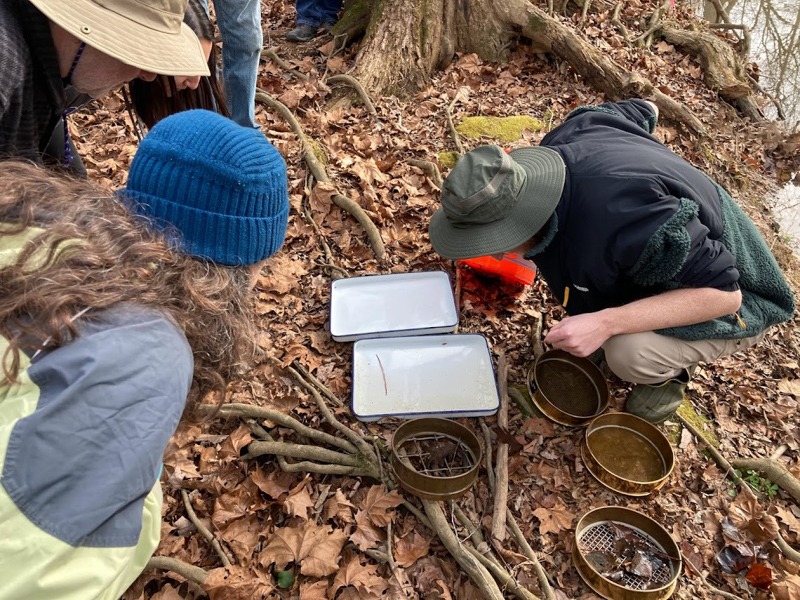Glowing Waterdogs and Farting Rivers: A Duke Forest Research Tour
For immediate release ‐ February 12, 2024
Contact: Jon Pishney, 919.707.8083. Images available upon request
 Jonny Behrens looks for aquatic macroinvertebrates with Duke Forest Research Tour participants.
Jonny Behrens looks for aquatic macroinvertebrates with Duke Forest Research Tour participants.
By Sophie Cox
We walked down a short trail by the creek, and the tour split into two groups. Our group walked farther along the stream to meet two herpetologists studying the elusive dwarf waterdog.
Bryan Stuart, Ph.D., Research Curator of Herpetology at the North Carolina Museum of Natural Sciences, and Ron Grunwald, Ph.D., Duke University Senior Lecturer Emeritus, are involved in a study looking for dwarf waterdog salamanders (Necturus punctatus) in New Hope Creek. Dwarf waterdogs are paedomorphic, Stuart said, meaning they retain larval characteristics like external gills and a flat tail throughout their lives. In fact, the genus name Necturus means “tail swimmer” in reference to the species’s flat tail.
According to Stuart, on October 3, 1954, Duke professor and herpetologist Joe Bailey collected a dwarf waterdog in New Hope Creek. It was the first record of the species in Orange County.
The Duke Forest is in the westernmost part of the species’ Piedmont range, though it extends farther west in parts of the sandhills. “To have a dwarf waterdog record in Orange County—that’s almost as interesting as it gets,” Stuart said.

